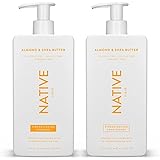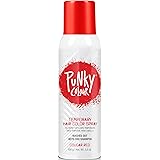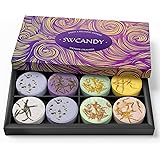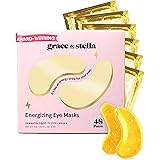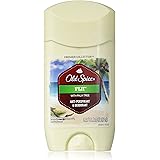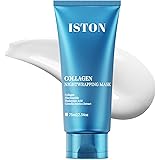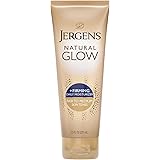Navigating the vast world of fragrances can feel overwhelming. With countless bottles vying for your attention, it’s easy to get caught up in the hype or be swayed by beautiful packaging. But how do you ensure you’re making a smart investment and not ending up with a scent that disappoints? While personal preference always plays a huge role, some fragrances simply don’t deliver on key expectations. The video above offers a quick, punchy take on several such contenders, pinpointing some fragrances you shouldn’t buy according to one expert’s opinion.
This accompanying guide dives deeper into the ‘why’ behind those quick judgments, providing additional context and helping you understand what to look for—and avoid—when building your scent collection. We’ll break down the crucial aspects of a good fragrance, from how long it lasts to its overall appeal, and expand on the specific issues raised in the video.
Understanding Fragrance Performance: Longevity and Projection
One of the most common complaints in the fragrance community, and a recurring theme in the video, revolves around “performance.” This isn’t just about how it smells; it’s about how long that smell lasts (longevity) and how far it extends from your body (projection or sillage).
1. The Disappointment of Poor Longevity
Imagine investing in a gorgeous scent, only for it to fade into oblivion an hour or two after you spray it on. This is a common pitfall. The video highlights several fragrances for this very reason:
- Paco Rabanne Legend: While it might initially smell pleasant, if it doesn’t stick around, what’s the point? You want your signature scent to last through your day, not just the morning commute.
- Dolce & Gabbana Light Blue: A popular choice for its fresh, aquatic profile, but as the video suggests, its lack of staying power can make it a regrettable purchase. Why repurchase a bottle frequently if the scent vanishes too quickly?
- Rochas L’Homme: Described as smelling “sexy,” yet failing on performance. A sexy scent is only effective if it’s noticed and lasts. If it’s gone before your first meeting, its charm is lost.
- Pure XS Night: Besides being “too sweet,” its performance is called into question. A fragrance that’s both cloying and fleeting offers the worst of both worlds.
- Wonderwood: Noted as “cool” but again, lacking good performance. Sometimes, a unique scent isn’t enough if it doesn’t have the staying power to be truly appreciated.
- Goldfield & Banks Pacific Rock Moss: Here’s a real heartbreaker – “smells gorgeous” but “doesn’t perform good.” It’s like a beautiful song played too quietly. This is a common issue with lighter, fresh fragrances, which often struggle to last as long as heavier, resinous ones.
- Acqua di Gio: A legendary freshie that many love, but the video bluntly states it “doesn’t perform good, so it sucks.” For such an iconic and often pricey fragrance, poor longevity can certainly feel like a rip-off.
When you’re shelling out good money for a fragrance, you want it to work for you. Poor longevity means you’ll likely use more sprays, going through the bottle faster, or simply be disappointed that your chosen scent doesn’t accompany you throughout your day.
2. Projection: Making Your Presence Felt (Subtly)
Beyond how long a fragrance lasts, its projection—how far it radiates from your skin—is equally important. A fragrance with great longevity but no projection is a skin scent; you have to get very close to smell it. While some prefer this intimacy, most want their scent to have a moderate aura.
Imagine you’re at a social gathering. A well-projecting fragrance leaves a subtle, pleasant trail, making a quiet statement. One with poor projection, however, might only be detectable by someone leaning in for a hug, which limits its impact and value. The video’s criticisms of “doesn’t perform” usually encompass both longevity and projection, implying these scents simply don’t make enough of an impact.
Scent Profile: Sweetness, Uniqueness, and “Boring” Factors
While performance is a practical concern, the actual smell of a fragrance is, of course, paramount. But even here, there are subjective pitfalls that can lead to a less-than-satisfying purchase.
3. The Perils of Excessive Sweetness
Sweet notes are incredibly popular in modern perfumery, from vanilla and caramel to various fruity and gourmand accords. However, there’s a fine line between pleasantly sweet and cloyingly overpowering.
- Pure XS Night: Called out as “too sweet.” While some enjoy very sweet fragrances, an overabundance can make a scent feel immature, heavy, or even nauseating, especially in warm weather.
- 1 Million Parfum: This variation of the iconic 1 Million is also criticized for being “too sweet,” and specifically for lacking the “great, good sexiness that the original has.” This highlights how a new interpretation can lose the balance that made the original so appealing, favoring a trend that might not serve the fragrance well.
When a fragrance is excessively sweet, it can limit its versatility, making it less suitable for professional settings or warmer climates. It can also become fatiguing to wear for extended periods, both for the wearer and those around them.
4. The Quest for Uniqueness vs. “Boring” Scents
In a saturated market, standing out can be a challenge. Many people seek a unique scent that sets them apart, rather than one that smells like everyone else’s. The video touches on this:
- So Scandal: Simply deemed “boring.” A fragrance can be well-performing and pleasant, but if it lacks character or a distinctive twist, it might not inspire passion or feel worth the investment for someone seeking something special.
- Unspecified “Not Unique” Fragrance: The video briefly mentions a scent with “okay performance but is not unique. Boring.” This perfectly encapsulates the dilemma. Why spend money on something that doesn’t inspire or differentiate you when there are thousands of other options?
- Unspecified “Unique but Short Lasting” Fragrance: This represents the other side of the coin – a fragrance that stands out but doesn’t last. For many, a highly unique but fleeting scent is still a better experience than a long-lasting but generic one, but it still means compromising on performance.
Finding a balance between mass appeal and distinctiveness is key. A fragrance doesn’t have to be avant-garde to be good, but it should evoke something beyond a generic “nice” response.
Making Smarter Fragrance Choices
So, how do you avoid these common pitfalls and make sure you’re getting value for your money? The video’s blunt advice serves as a useful starting point, emphasizing that not all popular or well-marketed fragrances are the best buys for everyone. Here are a few tips to guide you:
5. Test Before You Invest
Never blind buy a full bottle based solely on reviews or recommendations. Always test a fragrance on your skin. What smells great on a blotter or someone else might react differently with your skin chemistry. Pay attention to how it evolves over several hours.
6. Define Your Priorities
What’s most important to you? Is it longevity above all else? Do you prioritize unique notes, or a crowd-pleasing aroma? Understanding your own preferences will help you filter through the noise and make more targeted choices. If you want fragrances you shouldn’t buy to be off your radar, knowing your core criteria is essential.
7. Consider the Occasion
Some fragrances are better suited for specific occasions or seasons. A heavy, sweet scent might be perfect for a winter evening, but stifling in a summer office. Thinking about where and when you’ll wear a fragrance can prevent purchasing something that lacks versatility for your lifestyle.
Ultimately, the goal is to build a fragrance wardrobe that you genuinely love and that serves your needs. By paying attention to performance, understanding scent profiles, and making informed decisions, you can navigate the complex world of perfumery and choose wisely. Let the video above be a quick cautionary tale, and this guide your expanded resource, helping you steer clear of those fragrances you shouldn’t buy and instead discover scents that truly shine for you.




